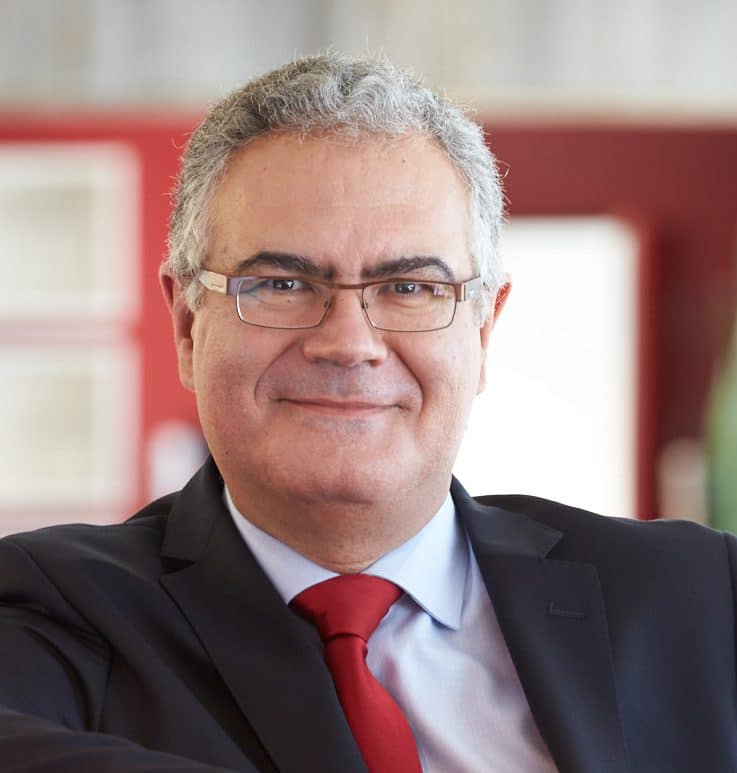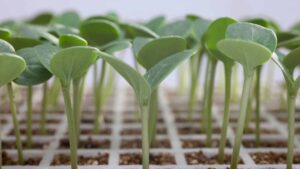While there’s a lot of work to be done, the ISF committees are getting down and dirty to find solutions for the seed industry.
Communicating, engaging and changing is just a taste of what the International Seed Federation (ISF) is working to achieve this year. They’re also rolling up their sleeves to work on many other aspects of the seed industry that will help them get closer to their vision of “a world where the best quality seed is accessible to all, supporting sustainable agriculture and food security.”
In 2016, ISF set a few strategic goals:
- Innovation by moving towards consistent policies for products developed through the latest plant breeding methods.
- Promoting the harmonization of policies and regulations for phytosanitary measures for seed applied technologies.
- Encouraging biodiversity by supporting the International Treaty as the preferred tool to administer genetic resources.
- Facilitating cooperation between countries to simplify procedures for plant variety protection at an international level.
With this vision and these strategic goals top-of-mind, the various committees of ISF have their work cut out for them, and they’re diving in and getting down to the nitty-gritty work.
Facilitating the movement of seed
The International Plant Protection Convention (IPPC) has provided a number of International Standards for Phytosanitary Measures (ISPM) to serve as guidelines for countries to implement phytosanitary measures and procedures to manage the introduction and spread of plant pests.
In 2017, ISPM 38 on the international movement of seed was adopted by the IPPC. Since the adoption, ISF has been working together with national and regional seed associations to develop training materials to assist countries with the implementation of the standard.
“ISF has developed and participated in various workshops and meetings to raise awareness and provide better understanding of ISPM 38 to both industry and National Plant Protection Organizations (NPPOs),” says Rob Keene, director of International Affairs for Enza Zaden and chair of ISF’s Phytosanitary Committee. “It’s an ongoing process as all countries are at various stages of implementation, but there’s been quite a lot of collaboration between the IPPC, NPPOs and the industry since it was adopted.”
An ISPM 38 training manual has been developed by ISF to provide the industry with a better understanding of the IPPC, NPPOs, the guidelines contained within the standard and the outreach opportunities available to companies and seed associations.
ISF is also supporting the development of a systems approach for the international movement of seed. Briefly mentioned in ISPM 38, a systems approach could provide a more efficient, predictable framework for managing the pest risk associated with seed.
“Currently, importing countries manage pest risk by requiring field inspections, seed treatment or seed testing,” Keene says. “In a systems approach, importing countries would also recognize the pest risk management activities that the seed industry is doing at all stages of seed production, from pre-planting all the way through post-harvest.”
In April, the IPPC made a decision to develop an annex to ISPM 38 that would provide further guidance on implementing a systems approach for seed.
“The development of the annex will require a significant amount of time and energy, but it is positive that numerous countries and the seed industry see the systems approach as an opportunity to more efficiently move seed while still effectively managing the associated pest risk,” Keene says.
The Regulated Pest Lists
As if phytosanitary regulations and certificates weren’t already difficult enough, another challenge ISF is working on this year surrounds the Regulated Pest Lists.
“If you’re in the seed business, it’s very likely that you have often had to deal with phytosanitary certificates before you can move seeds from one country to another,” says Frank Claessens, vice president of Operations Vegetable Seeds at BASF and chair of the Subcommittee on Vegetable Seed Health of ISF. “Sometimes the procedure to obtain them is relatively easy, and other times, it leaves you confused because country requirements that have to be met for the same seed species can be contradictory. Furthermore, when countries suddenly change their requirements for seeds to be imported customer orders can be missed.”
Contradictory country requirements and the difficulty with getting Phytosanitary Certificates in time are where the Regulated Pest List Initiative takes its roots.

“ISF brought these difficulties to the attention of the IPPC as early as the mid-1990s, but in 2007 the seed industry decided there was a need to assess the risk of seed introducing and spreading disease,” he says. “When is seed a pest risk? The objective of the Regulated Pest List Initiative is to develop a database with a science-based summary of pertinent information to serve as a resource for the industry and regulatory bodies.”
The answer to the question “Is seed a pathway for the entry and spread of disease?” is the focus of the Regulated Pest List Initiative. This answer for each pest in the species specific regulated pest list determines if the request for a Phyto Additional Declaration is technically justified. The assessment is based on a review of scientific literature and industry research, knowledge and experience.
Claessens notes that 75-80% of regulated pests are not technically justified, as there is scientific evidence that the seed isn’t a pathway for the pathogen.
“The database on the ISF website covers 12 vegetable seed species that are estimated to account for 90% of the value of seed that is traded internationally,” he says. “We want to expand the database to include more crops.”
Seeds are moved internationally for research, breeding, seed multiplication and commercial purposes. Claessens says seed companies pay a lot of attention to make sure their seeds are healthy.
“The supply of healthy seeds is essential to help assure growers of a healthy crop,” he says. “The seed industry uses preventive hygiene measures during every phase of seed production, from pre-planting, pre-harvesting to harvesting and post-harvest handling. The final decision on a seed shipment is often based on a laboratory test.”
Claessens says if you think about the volume of seed that is shipped every year and how few cases of disease outbreaks are attributed to infected seed measures, it shows how dedicated the seed industry is in ensuring seed health.
ISF needs now to partner with NPPOs and build mutual trust and confidence in each other, he adds. “With mutual trust, we can manage phytosanitary risks better. How? If the seed-not-a-pathway and crop-not-a-host pests are not regulated, we could spend our time and resources better on real pest risks.”
Seed Applied Technology
To promote the harmonization of regulations impacting the international movement of treated seed, ISF adopted a
position paper in June 2018. This paper outlines the typical seed movement in the industry, describes the regulatory issues impacting the movement of treated seed and outlines the prerequisites of a regulatory system that would facilitate the movement of treated seed.
“There is confusion on the terms and the scope of the regulations,” says Klaus Schluender, head of the Sub Business Unit Oilseed Rape of KWS and chair of the Seed Applied Technology Committee. “This leads to an interpretation of the regulations that has unintended consequences.”
ISF continues to raise awareness of this issue at the regional and national level and is actively developing outreach materials to assist seed associations with a targeted approach appropriate for their region.
“In the end, treated seed is still a seed,” says Schluender. “It should not be regulated as a seed treatment product.”
In addition, Schluender says seed treatment products are going through a heavy reevaluation period, and particularly in the EU, the industry is facing the loss of a lot of fungicides like Thiram and insecticides like neonicotinoids. The challenge is then to find something to replace those losses.
“If you do a proper seed treatment, only 0.5-1% of the acreage is exposed to the active ingredient in comparison with a sprayed application where 100% of the field is exposed,” Schluender explains. “Seed treatments are better, even if a lot of decision makers don’t understand that.”
Communication is key and the seed associations have an important role in this, he says.
An additional topic that the Seed Applied Technologies Committee is following closely is the discussion on microplastics in seed treatments.
“Microplastics are present in the form of polymers which are key to reducing dust-off and help the seed treatments to stick to the seed,” says Schluender.
Europe is currently considering the regulation of microplastics that aren’t biodegradable. As most polymers used today are not biodegradable, the industry would need to consider new, biodegradable polymers. This would take about 3 years to develop and another 7 years to get to market.
“This is something that can have a large impact on the industry, so ISF will need to work quickly to make people aware,” Schluender says.
Plant Breeding Innovation
After last year’s decision in the European Union (EU) to regulate varieties acquired by technologies such as mutagenesis and gene-editing like GMOs, plant breeding innovation (PBI) is at the top of everyone’s mind. However, according to Bernice Slutsky, senior vice president of Innovation at the American Seed Trade Association and chair of the PBI Working Group, countries are moving forward and so is ISF.
“We’re continuing to work on what we’ve always been working on,” Slutsky says. “Our goal is to have alignment across countries on science and risk-based approaches with respect to products around gene-editing. This is an ongoing process, and it continues to be the top priority of the working group.”
Slutsky says they’ve been taking their lead from the EU decision from the European Seed Association (ESA). “No one thinks this was a very good decision or a science-based decision, so if there’s anything we can do at an ISF level to support the strategy that ESA has, then that’s what we’re going to do to address the decision.”
Vegetables and Ornamentals
The priorities of the Vegetable and Ornamental Section are fully aligned with the strategic objectives of ISF and support some of the other committees’ work.

According to Vicente Navarro, senior vice president of Crop Strategy & Marketing, Vegetable Seeds of BASF and chair of the ISF Vegetables and Ornamentals section, there are three priorities for their committee: facilitating the global movement of seeds, preventing intellectual property (IP) infringement, and engaging with society.
“The vegetable seed sector is greatly exposed to market access problems, including phytosanitary issues, due to its nature — with more than 50 different crops produced in countries other than where treatment, packing and sales take place,” Navarro says. “Facilitating the free movement of seeds is probably one of the most difficult things that we are facing, especially when the enacted non-tariff measures are not science-based, but serve as a form of market protection.
Navarro says that the systems approach is another project in which the section provides frequent inputs. “A globally accepted systems approach for seed is an opportunity for NPPOs and industry to collaborate to develop a more efficient, predictable and secure framework to facilitate the international movement of healthy seed.”
Next, there are several projects under the protection of IP rights for the Vegetable and Ornamental section.
“Although IP rights are territorial in nature, most of the countries are signatories of the UPOV Convention therefore the PVP systems are more or less harmonized,” Navarro says. “Emphasis must be placed on the enforcement part. The vegetable seed sector wants to raise more awareness on IP infringement therefore we developed a guideline of good practices on how to protect IP rights more efficiently.”
Finally, Navarro says engagement is key for their working group.
“If we are not capable of getting our business model accepted by society, then people will be negative towards our industry regardless of the value we are creating,” he says. “It’s really important for us to step up and engage with a broader audience, because if we don’t uphold our license to operate, then who will?”













